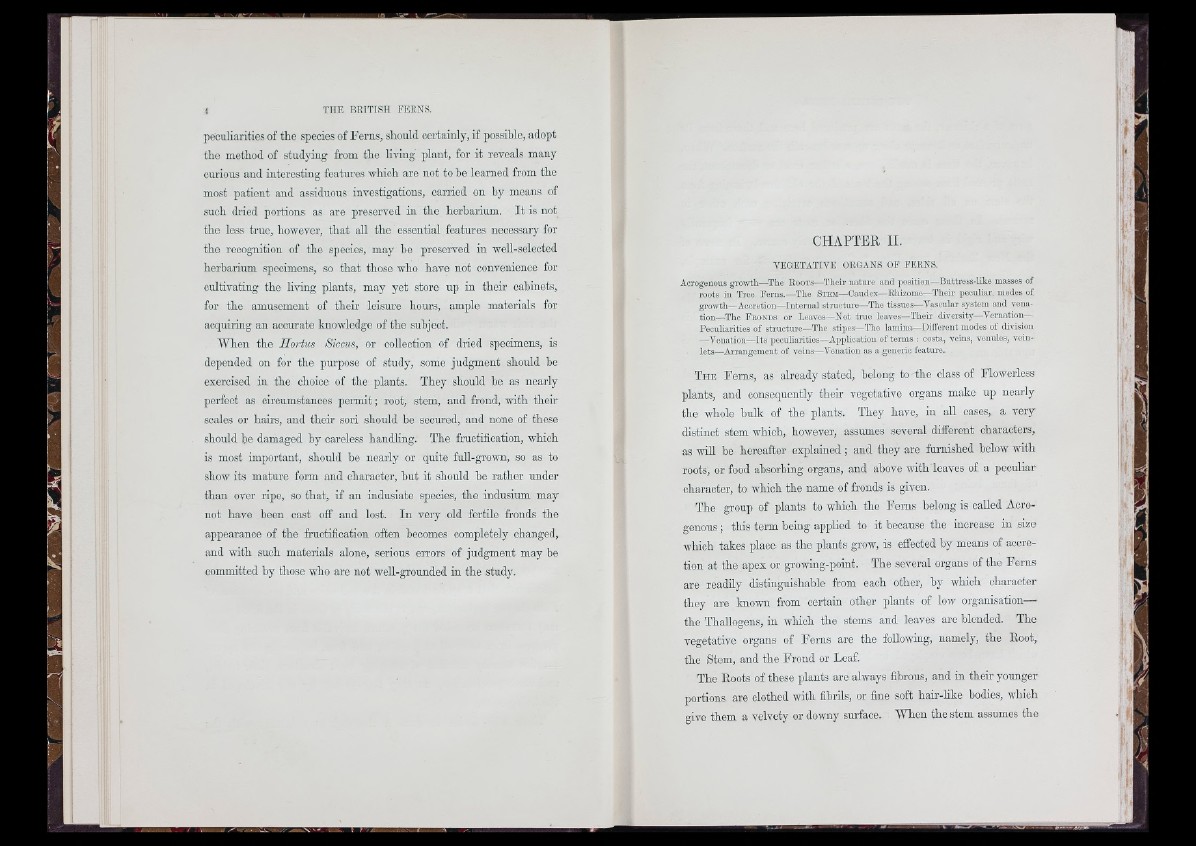
peculiarities of the species of Ferns, should certainly, if possible, adopt
the method of studying from the living plant, for it reveals many
curious and interesting features which aro not to be learned from the
most patient and assiduous investigations, carried on by means of
such dried portions as are preserved in tho herbarium. I t is not
the less true, however, that all the essential features necessary for
the rooognition of the species, may he preserved in well-selected
herbarium specimens, so that those who have not convenience for
cultivating tho living plants, may yet store up in their cabinets,
for the amusement of their leisure hours, ample materials for
acquiring an accurate knowledge of the subject.
IVhen the Hortus Siccus, or collection of dried specimens, is
depended on for the pm’pose of study, some judgment should bo
exercised in the choice of the plants. They should be as nearly
perfect as circumstances permit; root, stem, and frond, with their
soales or hairs, and their sori should be secured, and none of these
should be damaged by careless bandhng. The fructification, which
is most important, should be nearly or quite full-grown, so as to
show its mature form and character, but it should he rather under
than over ripe, so that, if an indusiate species, the indusium may
not have been oast off and lost. In very old fertile fronds the
appearance of the fructification often becomes completely changed,
and with such materials alone, serious errors of judgment may be
committed by those who are not well-grounded in the study.
CHAPTER II.
VEGETATIVE ORGANS OF FEENS.
Acrogenous growth—Tlie R o o ts—Their nature and position—Buttress-like masses of
roots ill Tree Ferns.—The S t e m — Caudex—Rhizome—Their peculiar modes of
growth—Accretion—In te rn a l structure—The tissues—Vascular system and vena-
tion—The Fk o n d s or Leaves—Not tru e leaves—Their diversity—Vernation—
Peculiarities of structure—The stipes—The lamina—Dilierent inodes of division
—Venation—Its peciiharities—Ajiphcatioii of terms : costa, veins, venules, veinle
ts—Arrangement of veins—Venatioii as a generic feature.
T h e Ferns, as already stated, belong to the class of Flowerless
plants, and consequently thoir vegetative organs make up nearly
the whole buUt of tho plants. They have, in all oases, a very
distinct stem which, however, assumes several different characters,
as will be hereafter explained; and they are furnished below with
roots, or food absorbing organs, and above with leaves of a peculiar
character, to which the name of fronds is given.
The group of plants to which the Ferns belong is called Aoro-
genous; this term being apphed to it because tbe increase in size
which takes place as tho plants grow, is effected by means of accretion
at the apex or growing-point. Tho several organs of the Ferns
are rcaddy distinguishahlo from each other, by which character
they are known from certain other plants of low organisation—•
the Thallogens, in which the stems and leaves are blended. The
vegetative organs of Ferns are the following, namely, the Root,
the Stem, and the Frond or Loaf.
The Roots of these plants are always fibrous, and in their younger
portions are clothed with fibrils, or fine soft hair-like bodies, which
give them a velvety or downy surface. When the stem assumes the